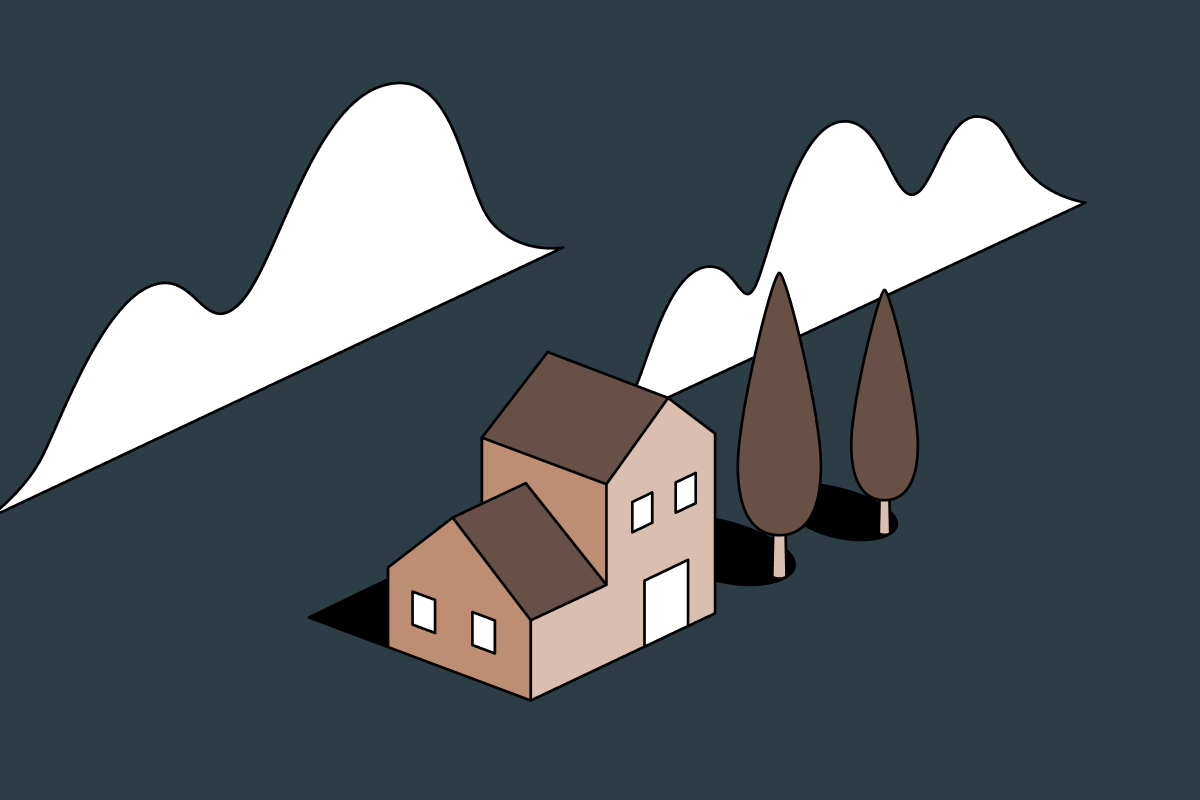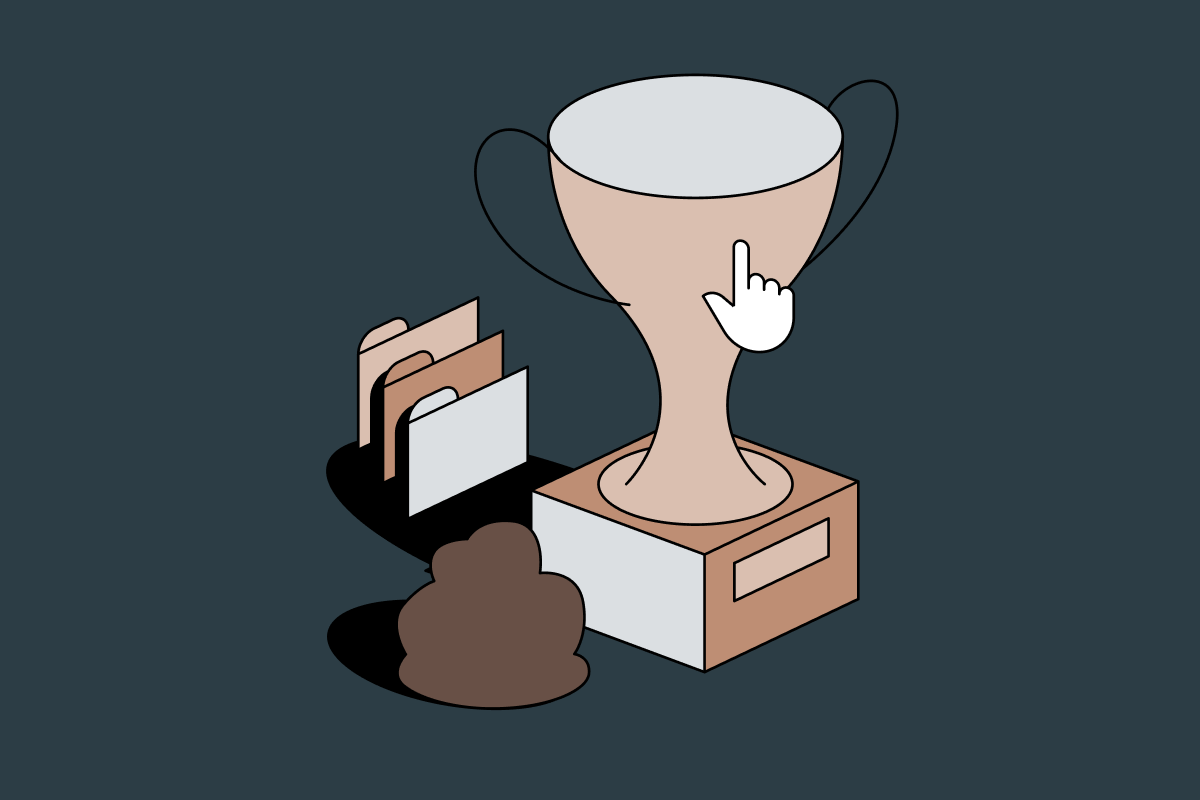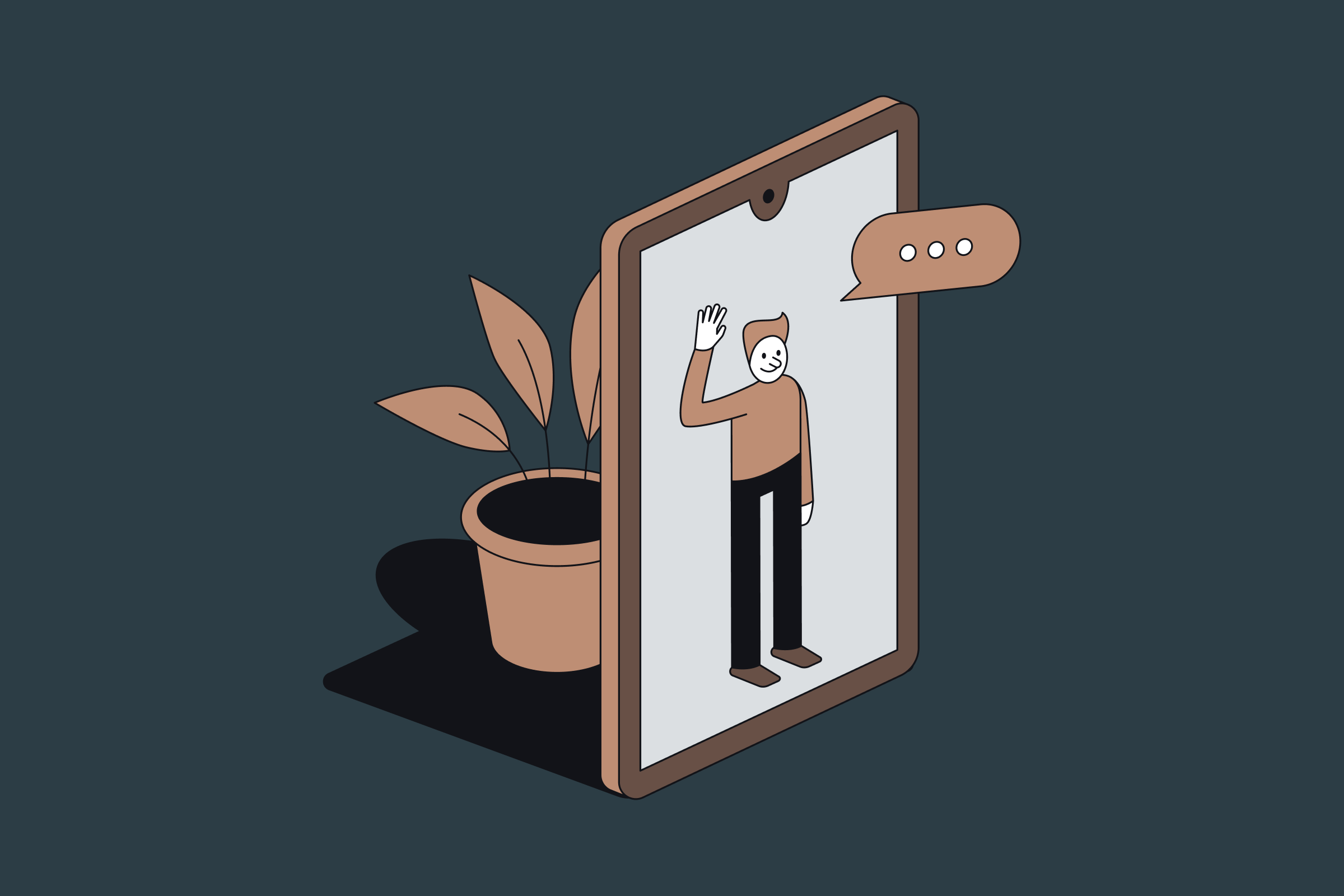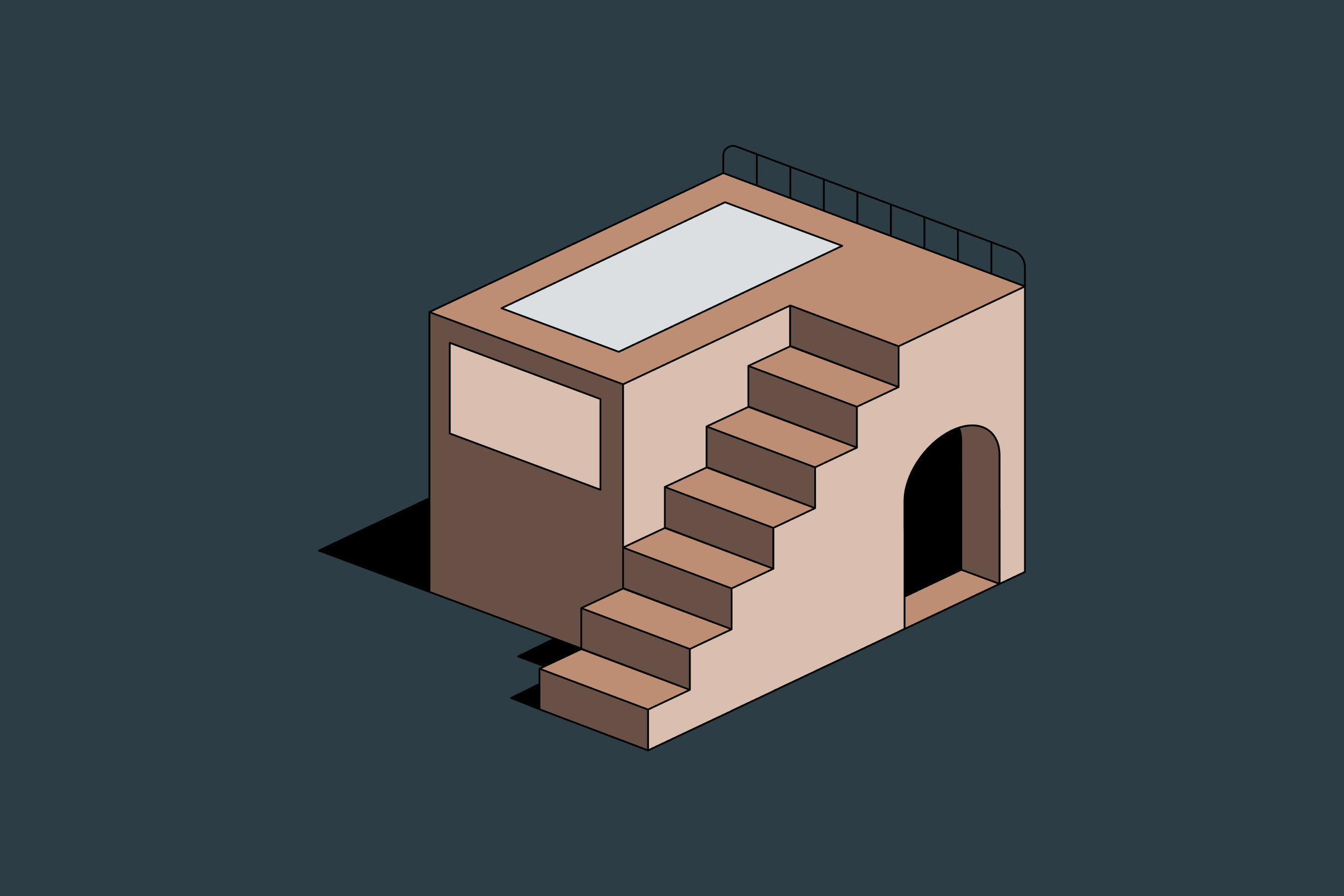UI/UX Design is a very broad concept. This may include choosing a color for a button, developing guidelines, or designing an entire set of company services and products. We can imagine a conceptual scale that covers all the activities of designers – from the global, big picture to the smaller but important details. The higher level – the more context is required to operate and the cost of error is increasing. These levels are interconnected and interdependent. The author of the presented model is Peter Merholz, a different existing model is by James Garrett but with five levels.
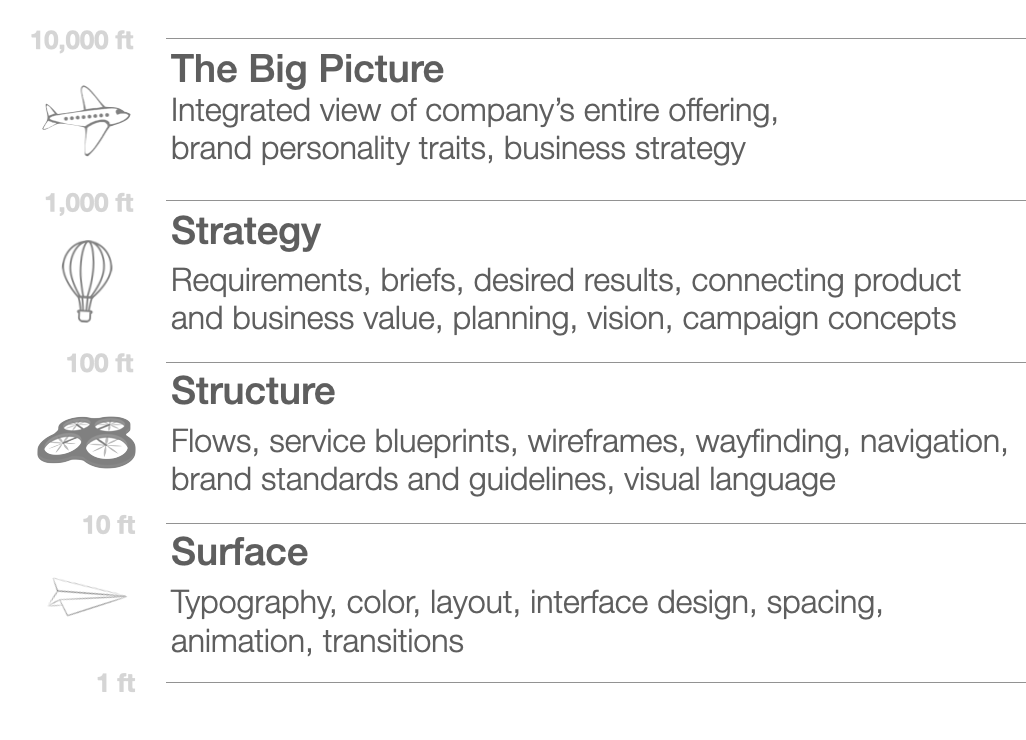
The Big Picture
The deepest and most abstract level of the presented model. This is a general, global view of the company. What are the business goals? What are our values? At first glance, this may seem like very vague concepts, but in fact, all this is critically important and largely determines local decisions. For example, compare the interfaces of Mailchimp and Sendgrid - they are completely different. Their differences are not only visual. Mailchimp is simple and friendly. Sendgrid is complex, functional. These characteristics distinguish companies globally, and differences appear even at the lowest level.
Strategy
At this level, you need to get answers to a number of important questions regarding the expectations from the finished product on the part of not only users but also businesses. What is the business strategy? What market does it exist in?
Structure
The structure of a website determines how users get to a page and where they can go next. Describes the layout and position of all critical elements, including navigation.
Surface
The surface level represents the appearance of the product from the end user's point of view, that is, typing text, pictures, links, forms, tabs, buttons, and more. In other words, visual design.
A company should be able to operate at all levels, regardless of its size, and one person cannot competently cover all these levels. Therefore, it is usually not enough to hire one designer. Working in pairs, even in a small company, is much more effective. One can take on most of the lower-level work (spends 80% of his time on Surface and 20% on Structure). Another can do this, but also interact strategically and across the organization (spend 60% of their time on Surface, 30% on Strategy, and 10% on Big Picture).
